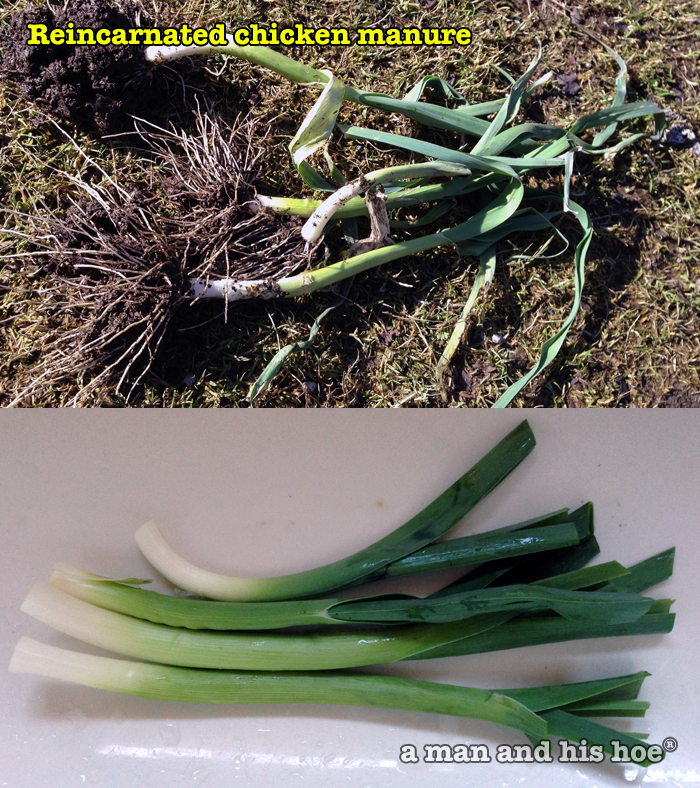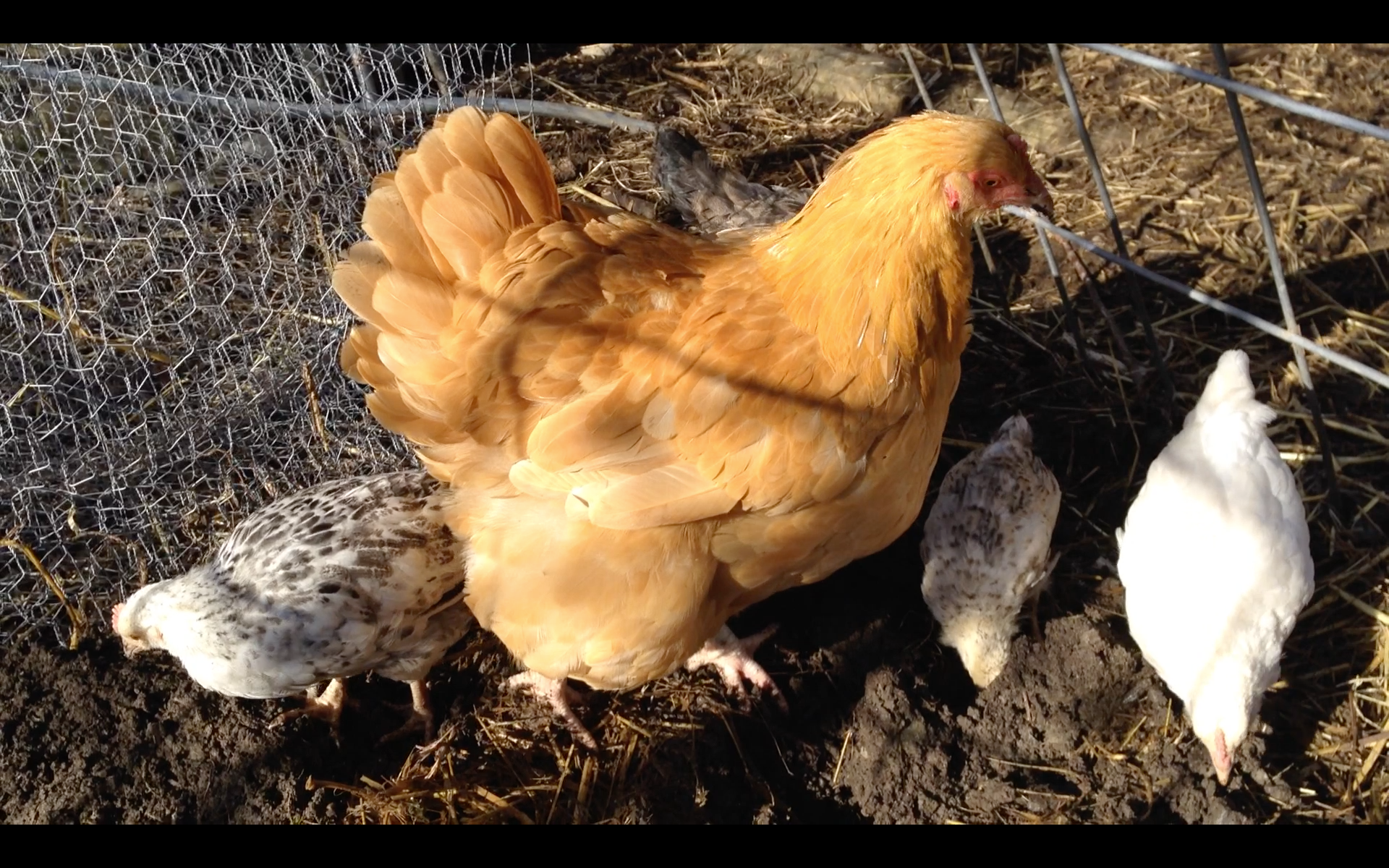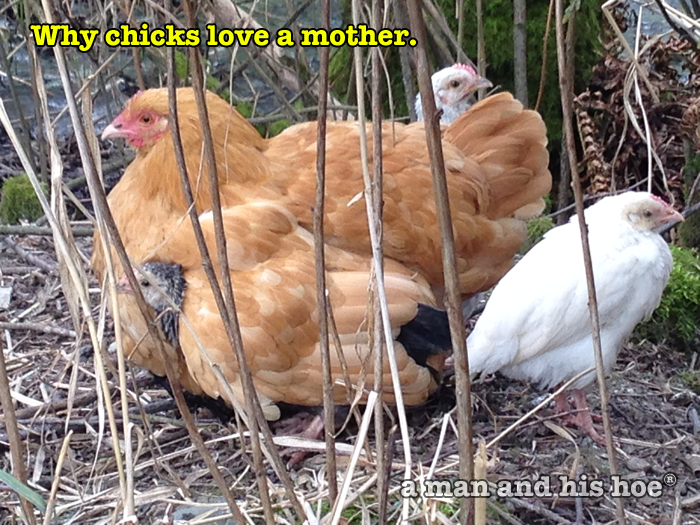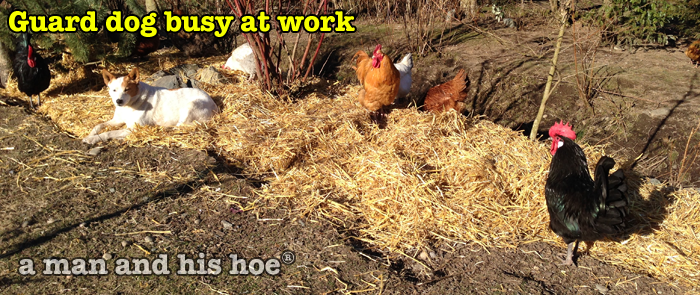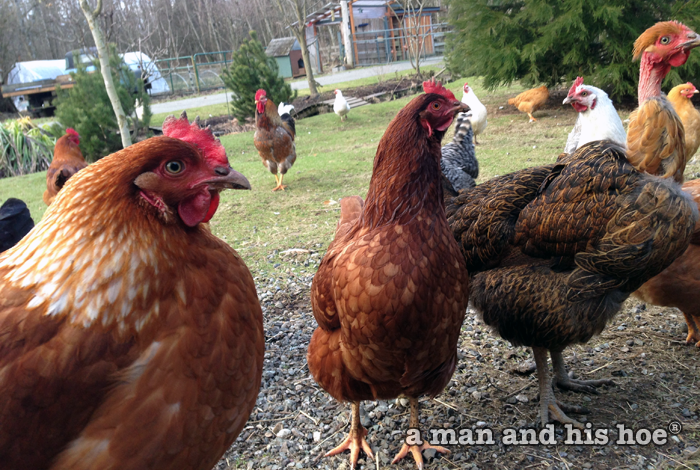
It takes both a rooster and a hen to create a chick. Just in the US, some 9,000,000,000 chickens are raised each year for meat. Which means that hidden from view there are millions of roosters and hens kept to pump out fertile eggs. Artificial insemination is not used much in the chicken industry. According to Marian Stamp Dawkins, Professor of Animal Behaviour, University of Oxford and Emeritus Fellow in Biological Sciences, Sommerville College, Oxford:
In commercial production, breeders are usually fed very restricted rations to prevent them from becoming overweight, obese and infertile, sometimes only 25-40% of the food they would eat if they could.
In other words, breeding hens and roosters are kept on starvation diets to keep them from becoming too fat. If they get too fat, they can’t physically breed! Imagine how you would feel if you could only eat a quarter of what you would like to eat.
However, this certainly is not what happens at a man and a hoe. The heritage breeds I raise don’t over eat. They won’t stay in one place and eat nonstop like the broiler breeds most chicken farmers raise. I could dump out a whole bag of grain and feed, and the chickens here will eat their fill and move on, leaving much of the grain and feed untouched. They have better things to do than sit around all day and stuff their faces. With acres of pasture and forest to explore, they would rather be outside enjoying the sunshine, courting, chasing small birds, and finding fat earthworms to savor.
Billy is a special rooster. The first rooster at a man and his hoe. He is now five years old and is starting to show his age. He’s survived an encounter with a raccoon, when he bravely kept a raccoon from getting the hens. He’s battled with younger roosters challenging his dominant position. Over the years he’s broken a toe, and after battles with younger roosters, hobbled around while he healed. But he’s still the king of the flock and has two inch long spurs to prove it. He’s very gentle with the hens and is the favorite rooster of many of the hens.
So when you buy chicken or eggs from me, rest assured that there are no starving breeding roosters and hens used in the process. All of the chickens here have very full lives, spending most of their time outdoors, and get to eat whenever they want.
